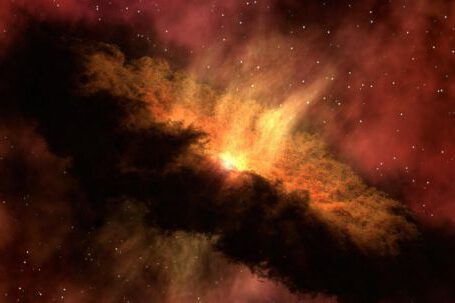The concept of dimensions has fascinated scientists and philosophers for centuries. We are all familiar with the three dimensions of space – length, width, and height – that define our physical reality. But could there be more dimensions out there waiting to be discovered? Recent advances in theoretical physics and cosmology suggest that we may indeed be on the verge of uncovering a hidden world beyond our current understanding.
The Mystery of Dark Matter
One of the reasons scientists suspect the existence of extra dimensions is the enigma of dark matter. Dark matter is a mysterious substance that does not interact with light, making it invisible to our telescopes. Yet, its gravitational effects on galaxies and other cosmic structures are undeniable. Scientists believe that dark matter could be made up of particles that exist in extra dimensions, which would explain why it is so difficult to detect.
String Theory and the Multiverse
Another intriguing idea that supports the existence of additional dimensions is string theory. According to this theory, the fundamental building blocks of the universe are not point-like particles but tiny vibrating strings. These strings exist in a space-time with more than three dimensions, commonly referred to as the “bulk.” Our three-dimensional universe is then thought to be a membrane, or “brane,” embedded within this higher-dimensional space.
Furthermore, string theory suggests the possibility of a multiverse, where multiple universes with different physical properties exist alongside our own. These parallel universes could be separated by extra dimensions, allowing for a vast array of different realities. While the existence of the multiverse is still a matter of debate among scientists, it provides a fascinating framework for exploring the concept of additional dimensions.
Experimental Evidence and the LHC
While theoretical ideas like dark matter and string theory offer tantalizing possibilities, experimental evidence is crucial for validating these concepts. One of the most significant experiments in recent history has been the search for the elusive Higgs boson at the Large Hadron Collider (LHC). The discovery of the Higgs boson in 2012 confirmed the existence of the Higgs field, which gives particles their mass. This discovery provided a major boost to the credibility of particle physics and opened up new possibilities for exploring the nature of the universe.
The LHC is now being upgraded to run at even higher energies, allowing scientists to probe deeper into the mysteries of particle physics. By colliding particles at these high energies, physicists hope to detect new particles or phenomena that could provide evidence for the existence of extra dimensions. While no definitive results have been obtained yet, the ongoing research at the LHC is bringing us closer to discovering a new dimension.
The Implications of a New Dimension
The discovery of a new dimension would have profound implications for our understanding of the universe. It could revolutionize our understanding of gravity, open up new possibilities for energy production, and provide insights into the nature of dark matter and the multiverse. It could also lead to technological advancements that are currently beyond our imagination.
In conclusion, the exploration of additional dimensions is an exciting field of research that holds the potential to revolutionize our understanding of the universe. The mysteries of dark matter, the theoretical framework of string theory, and ongoing experiments at the LHC all contribute to the growing body of evidence suggesting the existence of a hidden world beyond our three-dimensional reality. While much work remains to be done, we may indeed be on the verge of discovering a new dimension that could reshape our understanding of the cosmos.





